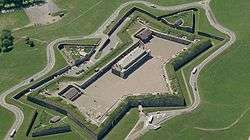Fort Edward (Nova Scotia)
|
| |
| Established | 1750 |
|---|---|
| Location | Windsor, Nova Scotia, Canada |
| Type | National Historic Site |
| Website | |
| Official name | Fort Edward National Historic Site of Canada |
| Designated | 1920 |
Coordinates: 44°59′43.43″N 64°7′57.69″W / 44.9953972°N 64.1326917°W Fort Edward is a National Historic Site of Canada in Windsor, Nova Scotia, Canada (formerly known as Pisiguit) and was built during Father Le Loutre's War. The British built the fort to help prevent the Acadian Exodus from the region.[1] The Fort is most famous for the role it played both in the Expulsion of the Acadians (1755) and in protecting Halifax, Nova Scotia from a land assault in the American Revolution. While much of Fort Edward, including the officers quarters (burned down 1922) and barracks, has been destroyed, the blockhouse that remains is the oldest in North America.[2] A cairn was later added to the site.
Father Le Loutre's War

Despite the British Conquest of Acadia in 1710, Nova Scotia remained primarily occupied by Catholic Acadians and Mi'kmaq. Father Le Loutre's War began when Edward Cornwallis arrived to establish Halifax with 13 transports on June 21, 1749.[3] By unilaterally establishing Halifax the British were violating earlier treaties with the Mi'kmaq (1726), which were signed after Father Rale's War.[4] The British remained largely in Halifax; having attempted to establish a settlement east of Halifax near present-day Lawrencetown Beach they quickly abandoned the effort due to the threat of Mi'kmaq attacks. Four years after the founding of Halifax, Lunenburg was established. To guard against Mi'kmaq, Acadian and French attacks on the new Protestant settlements, British fortifications were erected in Halifax (1749), Bedford (Fort Sackville) (1749), Dartmouth (1750), Lunenburg (1753) and Lawrencetown (1754).[5]
Within 18 months of establishing Halifax, the British also took firm control of peninsular Nova Scotia by building fortifications in all the major Acadian communities: present-day Windsor (Fort Edward); Grand Pre (Fort Vieux Logis) and Chignecto (Fort Lawrence). (A British fort - Fort Anne - already existed at the other major Acadian centre of Annapolis Royal, Nova Scotia. Cobequid remained without a fort.)[6]
Fort Edward was the site of the Acadian church for the parish of l'Assomption (established 1722).[7] After initially failing to take the settlements of Chignecto, Major Charles Lawrence ordered his New England Rangers to firmly control Pisiquid by having the Acadians destroy their church so that Fort Edward could be built in its place (1750).[8] On Gorham's march to Piziquid to secure the area prior to the setting up of Fort Edward, the Rangers engaged the Mi'kmaq in the Battle at St. Croix (1750).
The Fort is named after Edward Cornwallis, who established Halifax, Nova Scotia.
At first Alexander Murray commanded at Fort Sackville and then in September 1751 he was given command of Fort Edward, where he remained for most of the ensuing seven years, except for a tour of duty at Halifax in 1753. On the 12 December 1752, Murray was charged by the Nova Scotia Council with exploiting the local Acadian community by giving unfair prices for supplies and random imprisonment.[9]
November 1, 1753, Captain Hale was relieved by Commander Floyer as the commander of Fort Edward.[10]
Fort Edward, Fort Lawrence and Fort Anne were all supplied by and dependent on the arrival of Captains Cobb, Jeremiah Rogers or John Taggart, in one of the government sloops. These vessels took the annual or semi-annual relief to their destination. They carried the officers and their families to and from, as required.[11]
French and Indian War

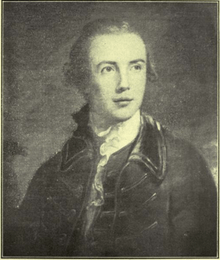

Fort Edward played an important role in the Bay of Fundy Campaign (1755) of the Acadian Expulsion. Shortly after the Battle of Fort Beauséjour on the eve of the Expulsion, the commander at Fort Edward Captain Alexander Murray wrote his wife saying the Acadians "are in as great anxiety as I am about their fate".[12] A month later, at exactly the same time as Lieutenant Colonel John Winslow read the expulsion orders in Grand Pré; September 5 at 15:00 hrs, Captain Murray read the order to the 183 Acadian males he had imprisoned at Fort Edward.[13] On October 20, 920 Acadians from Piziquid were loaded on to four transports.[14] Unlike the neighbouring community of Grand Pré, the buildings at Pisiquid were not destroyed by fire. As a result, when the New England Planters arrived, many houses and barns still stood there.[15][16] Fort Edward was one of four forts in which Acadians were imprisoned over the nine years of the expulsion (the others were Fort Frederick, Saint John, New Brunswick; Fort Cumberland; and Fort Charlotte, Georges Island, Halifax). On average, over a period of nine years, there were 350 Acadian prisoners at one time held at the garrison.[17]
Raids on Fort Edward
There was Acadian and Mi'kmaq resistance to the Expulsion. In September 1756, a group of 100 Acadians ambushed a party of thirteen soldiers of the 47th Regiment of Foot who were working outside the fort. Seven were taken prisoner and six escaped back to the fort.[18]
In the April 1757, a band of Acadian and Mi'kmaq partisans raided a warehouse near Fort Edward, killing thirteen British soldiers and, after taking what provisions they could carry, setting fire to the building. A few days later, the same partisans also raided Fort Cumberland.[19] Because of the strength of the Acadian militia and Mi'kmaq militia, British officer John Knox wrote that “In the year 1757 we were said to be Masters of the province of Nova Scotia, or Acadia, which, however, was only an imaginary possession.“ He continues to state that the situation in the province was so precarious for the British that the “troops and inhabitants” at Fort Edward, Fort Sackville and Lunenburg “could not be reputed in any other light than as prisoners."[20][21]
In the early 1760s it was illegal for Acadians to reside in Nova Scotia; families and individuals who had avoided capture in 1755 were imprisoned.[22] The prison lists for Fort Edward between 1761-1762 still exist (For a list of the prisoners see List of Acadian Prisoners - Fort Edward).[23] In 1762, one of the most famous prisoners, Acadian Joseph Broussard (Beausoleil) was imprisoned here.[24] Between June 1763 and 1764, in the Minas region, the British authorities took 363 Acadians into custody at Fort Edward.
While prisoners, the Acadians were made to assist the New England Planters with establishing their farmlands. When the war finished, rather than stay and work as subordinates, the Acadians settled with their compatriots in present-day New Brunswick and Saint Pierre and Miquelon.[25]
Notable prisoners
- Acadian Joseph Broussard
- Father Henri Daudin [26]
- Father Jacques Girard[27]
Commanders
- Captain John Gorham (Gorham's Rangers (1750)[28]
- Capt George St. Loe (military officer) (40th) (1751)
- Capt. Patrick Sutherland, (45th Regiment) (1751)[29]
- Capt John Hale (47th) (1753)
- Capt Matthew Floyer, Nov. 1 (1753–54)
- Nicholas Cox (47th), (1754–56)[30]
- Capt. Alexander Murray, (1754–55)
- Capt Murray, Capt. Cox, on the 5th December, 1755, they were reinforced by Capt. William Lampson's and Capt Silvanus Cobb's companies of the first battalion of Governor Shirley's Massachusetts regiment (which was led by John Winslow)
- Capt. Cox, Capt. Lampson, Capt. Cobb (1756)
- Colonel Quintin Kennedy, regiment, under Lord Loudon, (Aug., 1757.)
- Capt Daniel Fletcher (military officer)[31][32] of Col Joseph Frye's Massachusetts regiment (1758–59).
- Capt Jotham Gay of Col. John Thomas' Massachusetts regiment (1759-1760)
- Capt Jotham Gay of Col. Nathanial Thwing (Nathan) (1759–60), May 14, 1760, to Jan. 10, 1761.
Gallery
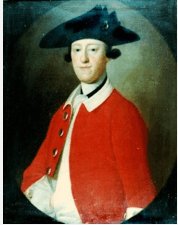 Captain John Hale, 47th Foot
Captain John Hale, 47th Foot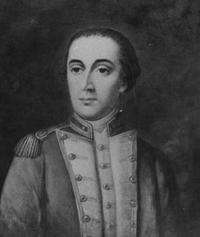 Captain Nicholas Cox - longest serving commander
Captain Nicholas Cox - longest serving commander
American Revolution
During the American Revolution the 84th Regiment of Foot (Royal Highland Emigrants), 2nd Battalion were stationed at Forts throughout Atlantic Canada. Fort Edward was the headquarters for the 84th Regiment in Atlantic Canada. The 84th Regiment moved from Halifax to Fort Edward to guard against a land assault on Halifax. Throughout the war, Fort Edward housed prisoners taken from American Privateering ships.
The Jacobite heroine Flora MacDonald spent the winter of 1778 - 1779 at the Fort with her husband, Alan Macdonald, before she returned alone to Scotland.
War of 1812
Fort Edward was also active during the War of 1812. During this time, the Fort continued to protect Nova Scotia against assault by American Privateers.
Fort Edward remained part of the British defenses in Nova Scotia until 1858.
World War I


During World War I, it was utilized as a training depot for Canadian and British soldiers. The site became known informally as "Camp Fort Edward" for the duration of the war. Among the recruits passing through the camp was the ill-fated Hollywood film director William Desmond Taylor.
During World War I the British Army used the fort to establish a training depot for Jewish men training to liberate Palestine from Turkish rule and ultimately help Great Britain, France and America defeat Germany. Known as The Jewish Legion, this unit, was "stood up" for service in 1917 manned by Jews from around the world who came to Windsor for training on the slopes of the fort with Major W.F.D Bremner. The Legion was made up of Battalions 38-42. At Fort Edward was the 39th Battalion, 1100 Jewish troops led by Lt Colonel Eliezer Margolin. Bremner lived in Castle Fredericks and is an ancestor of Falmouth’s James J. Bremner (See Halifax Provisional Battalion). Pictures and first-hand accounts of the time indicate that the men lived in tents on the hillside below the blockhouse.[33]
Many of these recruits came with Zionist ideals and dreams of a restored Palestinian homeland for the Jews. In Windsor, Nova Scotia 1100 non-commissioned officers were trained. Founders of the legion included David Ben-Gurion, who became the first prime minister of Israel, and Ze'ev Jabotinsky, both men were trained at Fort Edward. At age 70, David Ben-Gurion reported on his time at Fort Edward: "I will never forget Windsor where I received my first training as a soldier and where I became a corporal."[34]
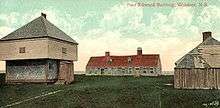
Fort Edward National Historic Site
The fort was designated a National Historic Site in 1920.[35] The blockhouse was additionally designated a Classified Federal Heritage Building in 1994.[36]
Windsor Agricultural Fair
The Windsor Agricultural Fair is the oldest continuous agricultural fair in North America, beginning with the first generation of New England Planters at Fort Edward (1765).
See also
- Military history of Nova Scotia
- Military history of the Mi’kmaq People
- Military history of the Acadians
References
Texts
- Issac Deschamps - diaries
- Orderly book kept by Nathaniel Bangs at Fort Edward, 10 May-18 Nov. 1759; and at Halifax, 7 Feb.-May 1760. Bangs was a sergeant in a company led by Captain Jotham Gay of Hingham, Mass. of John Thomas's Regiment of Mass. Provincials.
- Grenier, John. The Far Reaches of Empire. War in Nova Scotia, 1710-1760. Norman: U of Oklahoma P, 2008.
- Griffiths, Naomi Elizabeth Saundaus. From Migrant to Acadian: A North American border people, 1604-1755. Montreal, Kingston: McGill-Queen's UP, 2005.
- Murdoch, Beamish. A History of Nova Scotia, Or Acadia. Vol 2. LaVergne: BiblioBazaar, 2009. pp. 166–167
- Silas Rand. Attack on Fort Pemaquid by the Indians. Micmac Indian Legends. 298-299
- Wicken, William. Mi'kmaq Treaties on Trial: History, Land, and Donald Marshall Junior. University of Toronto Press. 2002.
Endnotes
- ↑ Salusbury, Expeditions of Honour edited by Rompkey p. 91
- ↑ Paul Erickson (Editor), Jonathan Fowler (Editor). Underground Nova Scotia: Stories of Archaeology.Nimbus Publishing (Sep 29 2010)
- ↑ Grenier, John. The Far Reaches of Empire. War in Nova Scotia, 1710-1760. Norman: U of Oklahoma P, 2008; Thomas Beamish Akins. History of Halifax, Brookhouse Press. 1895. (2002 edition). p 7
- ↑ Wicken, p. 181; Griffith, p. 390; Also see http://www.northeastarch.com/vieux_logis.html
- ↑ John Grenier. The Far Reaches of Empire: War in Nova Scotia, 1710-1760. Oklahoma University Press.
- ↑ John Grenier. The Far Reaches of Empire: War in Nova Scotia, 1710-1760. Oklahoma University Press.
- ↑ There is debate over the establishment of the church in the partish l'Assomption. Upon a clear examination of the primary sources, Stephan Bujold determined that St. Famille was established in 1698, while l'Assomption was established in 1722. See Stephan Bujold (2004). L'Acadie vers 1550: Essai de chronologie des paroisses acadiennes du bassin des Mines (Minas Basin, NS) avant le Grand derangement. SCHEC Etudes d'histoire religieuse, 70 (2004), 59-79.
- ↑ See Cornwallis' orders to Gorham as cited by Beamish Murdoch. A History of Nova Scotia. Vol. 2. p. 175 as well as Stephan Bujold (2004). L'Acadie vers 1550: Essai de chronologie des paroisses acadiennes du bassin des Mines (Minas Basin, NS) avant le Grand derangement. SCHEC Etudes d'histoire religieuse, 70 (2004), 59-79.
- ↑ Beamish Murdoch. a History of Nova Scotia Vol 2, p. 213.
- ↑ Beamish Murdoch. a History of Nova Scotia Vol 2, p. 225.
- ↑ Beamish Murdoch. a History of Nova Scotia Vol 2, p. 232.
- ↑ https://archive.org/stream/collectionsofnov18novauoft/collectionsofnov18novauoft_djvu.txt Wolfe's Men in Nova Scotia. Nova Scotia Historical Society p. 8
- ↑ Faragher, p. 140, 346
- ↑ Faragher, p. 361
- ↑ Gwyn, Julian. Planter Nova Scotia 1760-1815: New Port Township. Wolfville: Kings-Hants Heritage Connection. 2010. p. 23
- ↑ John Faraghar. A Great and Noble Scheme. 2005. pp. 361-362. Gives duration of period Acadians initially held at Fort Edward (Sept 5 - Oct 20). Also see Regis Burn. The Acadians before 1755p.31 Brun mentions that - Murray order the Acadians to Fort Edward (as Winslow did of the Acadians at Grand Pre), 183 men and boys heed the call and are at Fort Edward on Sept 5, 1755; Also see Peter Landry. The Lion and the Lily. Trafford Press. 2007. p. 519
- ↑ Nova Scotia Historical Society, p. 27
- ↑ Boston Evening Post. 1756 October 18. p.2
- ↑ John Faragher. Great and Noble Scheme. Norton. 2005. p. 398.
- ↑ Knox. Vol. 2, p. 443 Bell, p. 514
- ↑ https://archive.org/stream/cihm_36456#page/n461/mode/2up/search/reputed
- ↑ Geoffrey Plank. An Unsettled Conquest: The British Campaign Against the Peoples of Acadia. University of Pennsylvania. 2001. p.164
- ↑ Regis Brun. La Societe Historique Acadienne, July/ August 1969, Moncton, New Brunswick (This article references the primary source as Archives nationals, Fonds des Colonies, C. 12 (Correspondance generale, Sainte Pierre et Miquelon, vol. 1, f. 22-26.) Also see Manuscripts of Chief Justice Deschamps 1750-1800, NSARM- Family Papers - Deschamps, Isaac - Vol. 32.
- ↑ d’Entremont, C. J. (1974). "Brossard, Beausoleil, Josepth". In Halpenny, Francess G. Dictionary of Canadian Biography. III (1741–1770) (online ed.). University of Toronto Press.
- ↑ Geoffery Plank. An Unsettled Conquest. University of Pennsylvania, 2001. p. 164
- ↑ Johnson, Micheline D. (1974). "Daudin, Henri". In Halpenny, Francess G. Dictionary of Canadian Biography. III (1741–1770) (online ed.). University of Toronto Press.
- ↑ Johnson, Micheline D. (1979). "Daudin, Henri". In Halpenny, Francess G. Dictionary of Canadian Biography. IV (1771–1800) (online ed.). University of Toronto Press.
- ↑ Old Parish of Windsor Nova Scotia p.58;1829, Judge Haliburton
- ↑ Fergusson, Charles Bruce (1974). "Sutherland, Patrick". In Halpenny, Francess G. Dictionary of Canadian Biography. III (1741–1770) (online ed.). University of Toronto Press.
- ↑ Lee, David (1979). "Cox, Nicholas". In Halpenny, Francess G. Dictionary of Canadian Biography. IV (1771–1800) (online ed.). University of Toronto Press.
- ↑ Bates and Fletcher genealogical register, p. 49
- ↑ Fletcher's regimental records
- ↑ The Valley Today: Independent News for the Annapolis Valley January 12, 2007
- ↑ The Valley Today: Independent News for the Annapolis Valley January 07
- ↑ Fort Edward. Canadian Register of Historic Places. Retrieved 30 September 2012.
- ↑ Blockhouse. Canadian Register of Historic Places. Retrieved 30 September 2012.
- Young, Richard. “Blockhouses in Canada, 1749-1841: a Comparative Report and Catalogue.” Occasional Papers in Archaeology and History, Canadian Historic Site, 1980.
External links
- Fort Edward National Historic Site - official Parks Canada site
- Photos and history
- West Hants Historical Society
